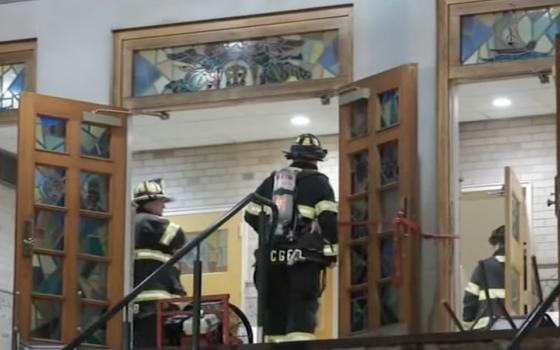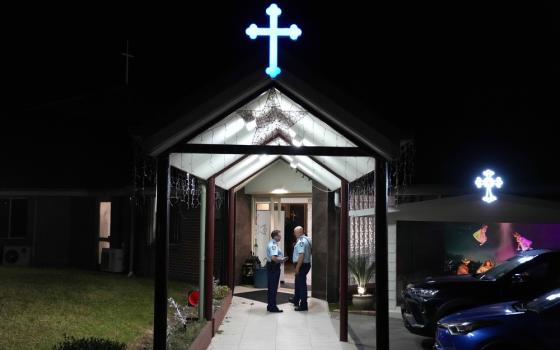The more things change the more they stay the same. Early in the last millennium there took place in Europe what historian of spirituality Richard Woods called “a mystical revolution.” In many ways this spiritual renewal in the 12th and 13th centuries was a distant mirror of what’s happening today.
Prior centuries had seen the rise of convents and monasteries, those great Benedictine, Augustinian and Carthusian institutions that preserved learning after the Roman Empire’s collapse. They offered new ways of living together, providing written “rules” that organized and shaped the nun or monk’s life. By the High Middle Ages, however, monastic institutions and convents became largely unavailable to non-aristocrats.
By the 12th century there was much ferment and unrest as feudalism passed and the rise of the middle class and an increase in urban populations occurred. These were times of institutional decadence, social breakdown and an abrupt widening of the rift between haves and have-nots. Males were in short supply because of the crusades. Clerical celibacy had just been introduced. Women had limited choices: either marriage or convents with pricey entry fees. Swings in climate brought on crop failures and famines. Radical, apocalyptic religious ideas and cults flourished.
While a period of colliding energies and conflicting concerns, it was also a time of hope and creativity. Spiritual seekers, disenchanted with both corrupt religious institutions and radical cults of the day, turned within to their own experience for guidance. This searching bore fruit. It led to the rise of the mendicant orders, the Dominicans and Franciscans. Also a widespread lay movement of working-class women emerged. These women were called Beguines. The word is thought to come from an old word that referred to one who rattles off prayers. Profoundly religious, yet neither nuns nor recluses, they chose to live in the world according to a simple gospel spirituality. They embraced a life of poverty, prayer and service to the poor, often managing shelters for women and children.
Many Beguines supported themselves with handwork, particularly weaving, spinning and sewing. Traces of this movement live on in our term spinster applied to older, unmarried women. These medieval women finally formed communities known as “beguinages,” some of which still survive in Belgium and Holland.
Beguines played a key role in the return of the feminine face of the divine to Western religion, in democratizing the church and in devising new devotions and pieties for the common folk. Our current feast of Corpus Christi was inaugurated by the Beguines, reflecting their devotion to the humanity of Christ, a reaction to clerical excesses and to flesh-hating heresies that focused solely on Jesus’ divinity.
Though they had an uneasy relationship with ecclesial power, a cleric of the time, Caesarius of Heisterbach, said of the Beguines: “In the midst of noise and confusion, they lead serene lives.” Together these women accomplished a quantum leap forward in spirituality. They found new ways to understand God present within creation, building sturdy bridges between the inner life and the outer. They faced the challenges of their anguished world and moved it forward out of chaos and loss of meaning to new vitality. They brought the gospel to life in their time.
It comes around again. I got a flyer recently promoting a conference on ecology and spirituality. On the right margin was a list of co-sponsors, a long litany of new communities that have arisen in the last two decades: The Franciscan Earth Literacy Center, Genesis Farm, Sisters of the Earth Community and Crystal Spring Center for Ecology, Spirituality and Earth Education, to name a few. At least 40 more women’s communities were listed as co-sponsors.
Again women lead the way in inventing new ways of living faith and being religious community. These new communities are notable for their holistic focus, integrating the life of the spirit, the life of the body and the life of the Earth around us in a seamless way. This holism is a kind of “rule,” as what was once split asunder in our theology and culture is now woven back together by these busy spinners.
The Dominican Sisters of Great Bend, Kan., for example, built a diverse community on the high plains that combines traditional religious community with innovative enterprises and outreach. Their mission statement mandates that they bring the gospel to life in mid-America. So in the heart of wheat country, they offer a holistic health center that provides massage, reiki and reflexology therapies, with a staff trained in alternative healing. Their center for spirituality offers workshops on prayer and directed retreats.
The community purchased an 80-acre parcel of land in 1987 to make a statement about their concern for small farmers and for ecology. The farm community that works the Heartland Farm includes a Mennonite couple and their children (who have grown from infancy to adulthood on the land), and three Dominican sisters. Interns come to learn organic farming techniques. The farm has been certified organic since 1994. Twenty acres are planted in alfalfa, which is sold to local farmers for feed. A large vegetable garden supplies the community and the nearby motherhouse. Recently an energy-efficient hermitage was built from straw bales for retreatants who come to the farm for solitude and prayer.
In Cincinnati, Paula Gonzalez, a Sister of Charity inspired by the first Earth Day in 1970, began a project known as La Casa del Sol, a 1,500-quare-foot house that stands as a model for recycling and energy efficiency. Using an old chicken coop as a base, the timber-framed house was put up in a few days like an old-fashioned barn raising. Gonzalez and another sister moved in. Their brainchild is EarthConnection, a center for learning and reflection about living lightly on Earth, home for tours, programs, internships and retreats. Gonzalez also raises money by doing what she calls “above-ground mining,” inviting people to search attics and garages for useful materials for construction, furnishing new projects and for fund-raising sales. Sr. Paula says her spirituality is grounded in her garden, where, in the growing season, she daily experiences “the miracle that is the universe.”
In Roeland Park, Kan., Carol Meyer works out of her home as a massage therapist and spiritual director. She publishes a small newsletter titled Wisdom Ways circulated by mail and Internet to local spiritual seekers. The newsletter is filled with tips on simplifying, finding peace or the consolations of a heart on fire in the midst of a busy urban life. A spare bedroom has become a meditation room featuring a small waterfall, incense burners and up-to-date icons lit by flickering candles. Meyer’s business flourishes.
In Vermont, Sr. Gail Worcelo and lay associate Bernadette Bostwick, together with their community of Passionist nuns, have started an Ecozoic Monastery in the Green mountains, the first Catholic community of nuns in the world dedicated to healing the Earth.
This is just a tiny sampling of the innovative communities and enterprises taking shape around the country. Like the Beguines in their time, these women foster new devotions honoring the Earth as God’s body and offer to others places of sanctuary, retreat and healing. In the midst of confusion, they lead serene lives.



